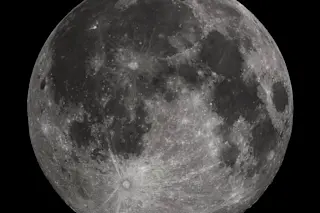The moon is earth’s closest, albeit inconstant, companion. Over the centuries, humans have blamed the moon for tides, fertility, werewolves and madness — mostly incorrectly. It’s such an intrinsic part of our night sky that we don’t even give it a proper name, simply an article: the moon. Of course, it’s had many names across many cultures, some of which still linger. The study of the moon is selenology, thanks to the Greek goddess Selene; her Roman counterpart was Luna. In China, the moon goddess was Chang’e, a name now bestowed upon the Chinese space agency’s lunar missions. It’s only thanks to such exploration that we’ve learned what we know about the moon.
A dramatic full moon looms over San Francisco. (Credit: spondylolithesis/Getty images)
spondylolithesis/Getty images
Humans have long associated oceans with the moon, understanding from observation that, even before we knew why, the moon influenced the tides. We now ...















